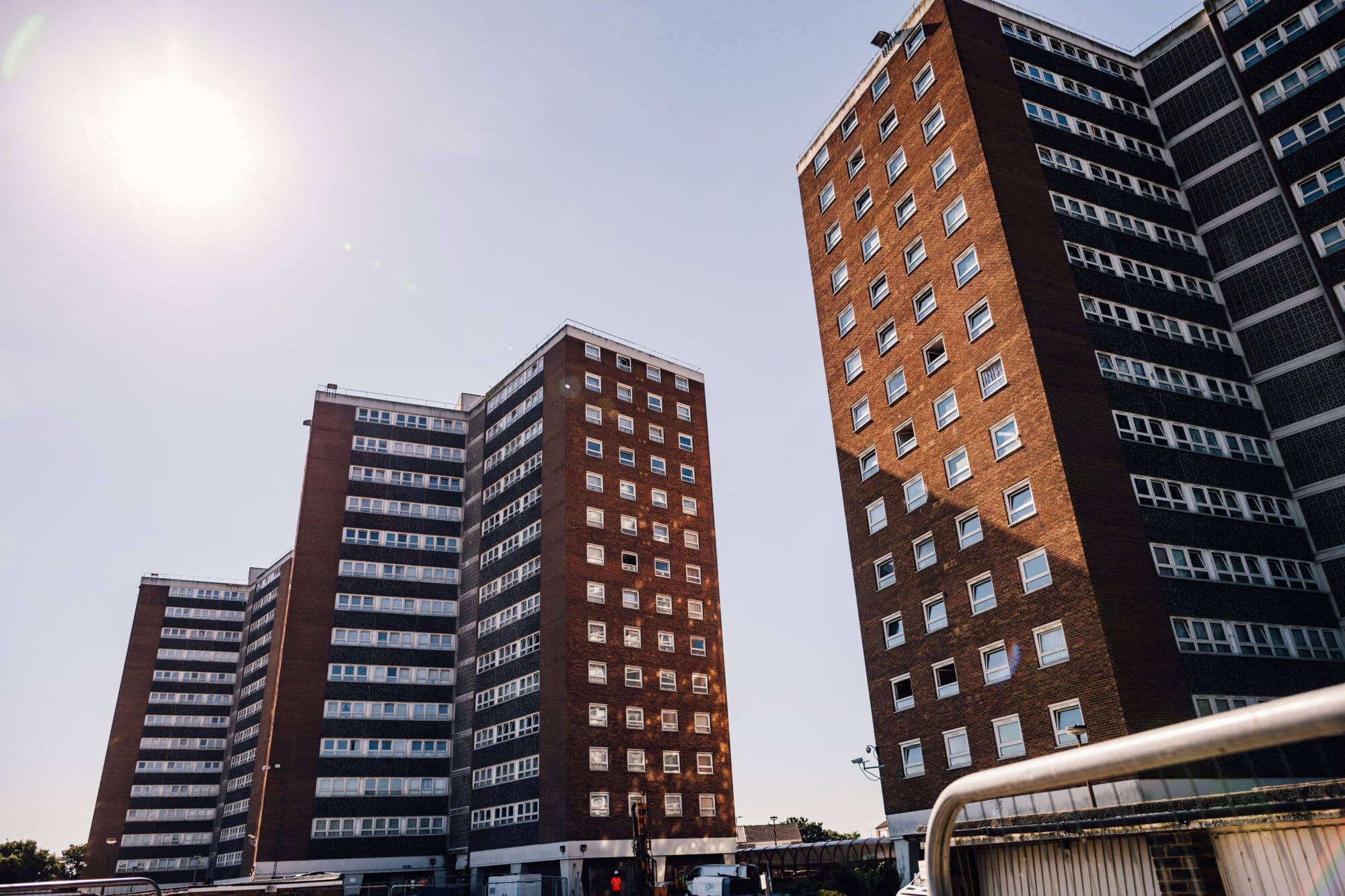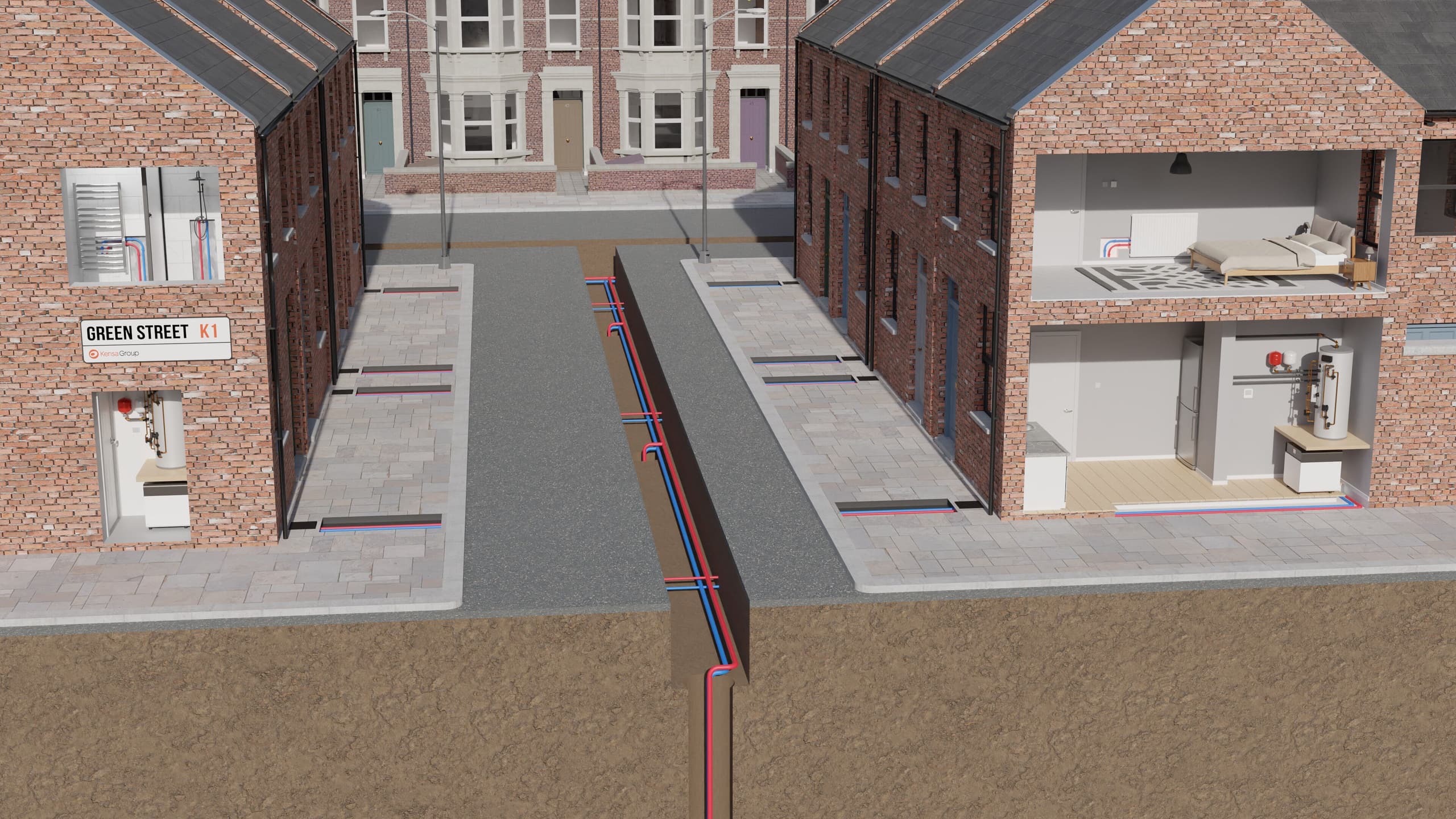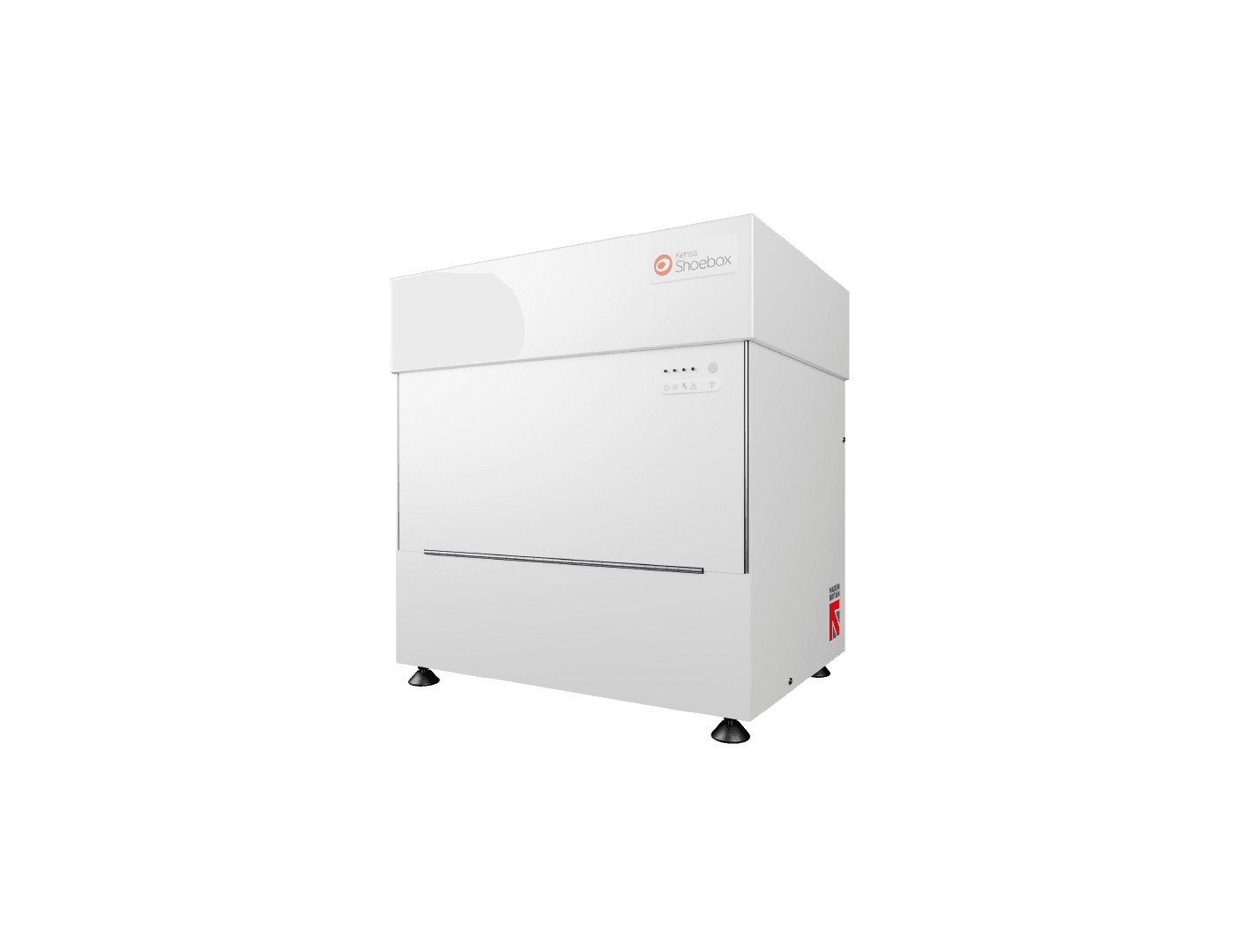Chadwell St Mary's, Thurrock Council
- LocationChadwell St Mary's Essex
- SectorPublic
- Completion DateNov 2023
Kensa and Thurrock Council delivered the flagship project, the largest  What is a Ground Source Heat Pump?Ground Source Heat Pumpsground source heat pump scheme to be part-funded by the Government's Social Housing Decarbonisation Fund (now in operation as the
What is a Ground Source Heat Pump?Ground Source Heat Pumpsground source heat pump scheme to be part-funded by the Government's Social Housing Decarbonisation Fund (now in operation as the  Warm Homes: Social Housing FundFundingWarm Homes: Social Housing Fund). This project will save 7,166 tonnes of carbon on this site over 25 years, which is the life of the ground source heat pumps in each flat.
Warm Homes: Social Housing FundFundingWarm Homes: Social Housing Fund). This project will save 7,166 tonnes of carbon on this site over 25 years, which is the life of the ground source heat pumps in each flat.
It also demonstrated the potential for  A decarbonisation solution for over 60% of UK homesNetworked Heat Pumpsnetworked heat pumps and shared ground loop arrays to rapidly and affordably decarbonise multiple properties across all social housing archetypes – offering a viable solution to deliver against the UK’s net zero targets. This project is strategically important because over 34% of all UK emissions are attributed to the provision of heat, and the Government has committed to delivering 600,000 heat pump installations per year by 2028.
A decarbonisation solution for over 60% of UK homesNetworked Heat Pumpsnetworked heat pumps and shared ground loop arrays to rapidly and affordably decarbonise multiple properties across all social housing archetypes – offering a viable solution to deliver against the UK’s net zero targets. This project is strategically important because over 34% of all UK emissions are attributed to the provision of heat, and the Government has committed to delivering 600,000 heat pump installations per year by 2028.
In existing homes, space and water heating accounts for two-thirds of a typical household bill. Social landlords can immediately improve tenant well-being by replacing less efficient, more expensive heating systems – such as night storage heaters – with low-running-cost ground source heat pumps.
For every 1kW of electricity paid for to run the heat pump, 3 to 4kW of heat are provided to deliver 100% of a property’s heating and hot water needs. By providing resilience against rising fuel prices and energy security, they can prevent future fuel poverty in homes and cut carbon emissions.
The retrofit saw 273 flats with storage heaters across three tower blocks in Chadwell St Mary’s – Gooderham House, Poole House and George Tilbury House, owned by Thurrock Council – replaced with Kensa ground source heat pumps inside each of them.
Thurrock Council secured £3.2 million from Wave 1 of the Government’s Social Housing Decarbonisation Fund (SHDF) to help finance the scheme. The SHDF, a £3.8 billion 2019 manifesto commitment, aims to support local authorities and social landlords in retrofitting their housing stock at scale over 10 years.
Ground source heat pumps utilise free, naturally occurring renewable heat stored below ground to cut heating bills by 66% when replacing night storage heaters. The ground source system is 300% efficient, which means for every unit of electricity, they can access two to three units of free renewable energy from underground to get considerable savings on heating costs.
Kensa’s compact  ShoeboxProductShoebox ground source heat pump commonly replaces ageing night storage heaters in tower blocks. Its small size means the Shoebox fits easily into an airing cupboard in each apartment. In the tower blocks at Chadwell St Mary’s, the Shoebox is paired with the similarly space-saving Sunamp heat battery to provide 100% of the property’s heating and hot water needs.
ShoeboxProductShoebox ground source heat pump commonly replaces ageing night storage heaters in tower blocks. Its small size means the Shoebox fits easily into an airing cupboard in each apartment. In the tower blocks at Chadwell St Mary’s, the Shoebox is paired with the similarly space-saving Sunamp heat battery to provide 100% of the property’s heating and hot water needs.
In the ‘Hard to decarbonise social homes’ report by NHF & LGA, it is cited that “[a] lack of internal or external space is a key barrier to retrofitting small properties, so technologies such as…shared loop heat pumps will have important roles to play for these homes.” The report also highlights the Kensa’s solution, saying, “The Kensa Shoebox system may be particularly beneficial for social landlords with high-rise flats, as individual units can be installed in each dwelling, preventing problems such as overheating or heat losses and the complications of shared heating bills.”
At Chadwell St Mary’s, Kensa designed a networked heat pump and shared ground loop Installation scheme connecting the 273 properties to 109 boreholes via an ambient temperature loop. They were drilled underneath in the car park of the flats and totalled nearly 30 km of vertical drilling over 6 months.
Considerable engineering challenges were involved, but Kensa kept the car park semi-open for residents. The boreholes provide ambient heat of around 5 to 10℃ to 273 individual Shoebox heat pumps in the flats. The heat pump upgrades the ambient heat through a reverse refrigeration cycle, providing 55℃ heat that can be fed into a wet central heating system inside each flat with radiators. A Sunamp heat battery, which is fed by the ground source heat pump, uses phase change materials to provide hot water at mains pressure.
Critically important is that each heat pump is individually connected to the tenant’s electricity meter, and no heat metering or billing is required. The tenants have complete control and can choose any energy provider for the lowest tariff possible. There is also no plant room or associated cost for the landlord to operate this heating system, and the tenants only pay for what they use equitably and fairly.
Installing the low-carbon heating systems at Chadwell St Mary’s is expected to provide a 70%+ reduction in carbon emissions (based on a 40-year lifecycle and carbon factor obtained from SAP 10.1, published 8/11/19). Over the life cycle of this installation, the total emissions saving of the heat pumps is projected to be 7,080 tons of CO2. This is the equivalent of taking 1,540 cars off the road*, significantly improving local air quality and reducing the carbon footprint of the residences.
The project is set to secure 67% savings on residents’ heating and hot water bills, a significant benefit considering over half of the recipients have been identified as currently at risk of experiencing fuel poverty.
During the COVID-19 pandemic, Thurrock Council undertook National Energy Action-funded training with its front-line staff. This enabled housing officers who were home working to conduct remote fuel poverty surveys with residents who lived in these tower blocks. Through their research, they realised the actual levels of fuel poverty were much higher than reported through national statistics. Many residents had heating bills over £3,000 before the energy cost increases of 2022 that plunged many more households into financial crisis.
Thurrock Council identified the urgent need to lift residents out of fuel poverty and built a business case to rectify years of underinvestment in the old heating systems with the support of Kensa’s strategic partnerships team.
As well as the heat pump installation, Kensa recommended that Thurrock Council undertake cavity wall insulation. This was done via abseil, which helped save the council further money due to not having to erect scaffolding.
Ambitious, large-scale projects like this one undertaken by Thurrock Council are vital to meeting the Government’s targets of 600,000 heat pump installs per year by 2028. Over 80% of UK homes will still be in use in 2050, so existing buildings must undergo significant improvements/ deep retrofitting to meet the decarbonisation challenge. Networked heat pumps provide the lowest carbon, running costs, and whole-life cost solutions, especially for high-rise heating developments. These systems help housing providers lower their environmental impact and future-proof their assets whilst protecting their tenants from fuel poverty.
